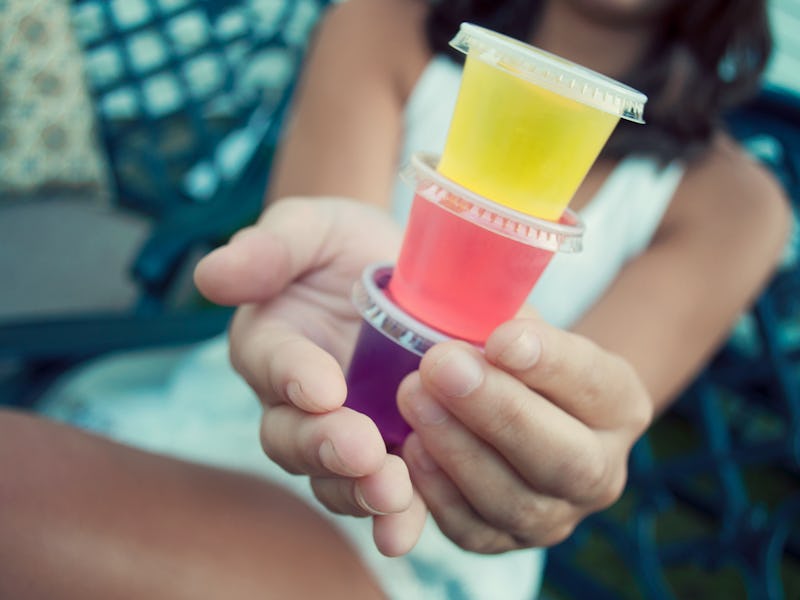Memorial Day 2018: How to Make the Perfect Jello Shot, According to Science
Avoid the gelatinous hangover.

Anyone who has slurped down jello shots at a party knows why they get a bad rap. Finding the right balance of flavor and texture is a science, and if not made correctly, will yield a sugary, gelatinous glob of a hangover.
Memorial Day Weekend is meant to be one of the most somber federal holidays, but it’s also the booziest. As the first major holiday of the summer, jello shots often make their appearance alongside barbecues to ring in the season. And what better way to celebrate than with slurpable gels designed to get you hammered?
Among jello shots’ many mysteries, most people don’t get the ratio of alcohol to gelatin quite right, resulting in shots with so much alcohol they don’t taste good, or sugary treats that mask the alcohol a little too well, creating a disaster hangover the next morning. But by understanding the science of working with gelatin, these alcoholic globs will help ring in the summer without a hitch.
It's a glob of hangover without the right quality gelatin
1. Know the “Bloom Rating” of the Gelatin
Gelatin is a hydrolyzed form of collagen, a protein that is usually sourced from an animal’s tendons, ligaments, or bones. (Sorry, vegans.) After this protein is heated in water it cools to form a gel, which is usually found in gummy candies.
During hydrolysis, the natural molecular bonds between individual collagen strands are broken down into a form that rearranges more easily. Gelatin’s water-binding ability is measured in something called bloom, named after the scientist Oscar T. Bloom, who first developed a test for measuring the strength of gels.
A strong gel is able to hold more alcohol. The bloom rating should be visible on the label of any gelatin powder, usually ranging from 50 (weak) to a rating of over 200.
2. Hydrate the Gel
Much like its consumers on the morning after, gels need to be hydrated. The tiny granules of powdered gelatin need to be filled with water in order for their individual collagen strands to break down and cross-link, forming a gel. This can be done by boiling the material, but powdered gelatin can be hydrated without bringing the water to full boil.
While the process of boiling might be faster, it often created pockets of dry gelatin powder trapped in a bubble of hydrated gelatin. When someone cuts open the cooled gel, these small bubbles burst with dry powder that tastes awful. To avoid that, let the powder sit in warm water until it creates a slurry. Once the slurry forms, there will be no dried powder left to hide in bubbles, so it’s safe to then heat the slurry to become a more viscous liquid of even consistency.
3. It’s All in the Ratio
Assuming the alcohol is at least of moderate quality, a 1:1 ratio between alcohol and water is a safe bet. But if using a quality gelatin with a high bloom rating, the gel will form with even higher alcohol quantities. Using up to eight ounces of vodka or another liquor per every four ounces of water feasible, but going beyond that ratio might harm the taste.
By understanding the bloom strength of the gelatin and the most effective way to hydrate the material, jello shots can hold more alcohol without losing taste. Memorial Day Weekend will taste a little sweeter.